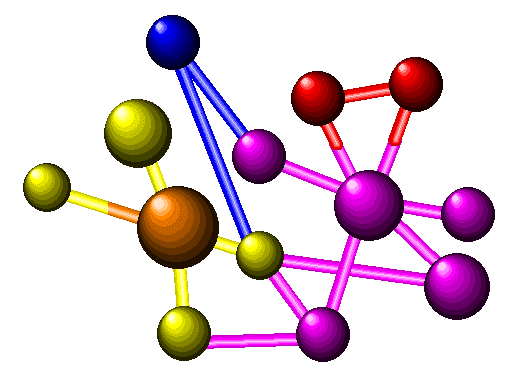Space Science Lesson: Solar System, Planets & Exploration
Lesson Overview
- What Is Space Science?
- What Makes up Our Solar System?
- What Are Smaller Celestial Bodies?
- What Are Stars and Galaxies?
- What Drives Space Exploration?
- What Is the Importance of Space Science in Everyday Life?
- What Challenges Face Space Exploration?
In this Space Science lesson, you will explore the fascinating structure and composition of our solar system. You will gain insight into scientific techniques used to study planets, moons, asteroids, and comets. This lesson aims to enhance your comprehension of planetary science and inspire curiosity about ongoing research and exploration in space science.

What Is Space Science?
Space science, also known as astronomy, is an exciting and vast field that explores everything outside Earth's atmosphere. It involves studying the sun, planets, moons, stars, galaxies, and countless other celestial bodies. Through space science, we learn how these celestial objects form, evolve, and interact with each other, helping us better understand the universe and our place within it.
What Makes up Our Solar System?
Our solar system is fascinating, including the Sun, eight planets, numerous moons, dwarf planets, and various smaller objects such as asteroids, comets, and meteoroids. All these bodies orbit around the Sun due to its powerful gravitational pull.
The Sun
The Sun is the largest object in our solar system and provides essential energy that supports life on Earth. It is made primarily of hydrogen and helium gases and produces energy through a process called nuclear fusion, releasing enormous heat and light. The Sun's gravitational force holds the solar system together, keeping planets and other celestial bodies in their orbits. Without the Sun, life on Earth would be impossible.
Planets
The planets in our solar system are fascinating because each has distinct characteristics, atmospheres, and geological features. Mercury, closest to the Sun, experiences extreme temperatures. Venus, though similar in size to Earth, has an extremely thick atmosphere and surface temperatures capable of melting metal. Earth is uniquely suited for life due to its atmosphere, liquid water, and appropriate temperature range. Mars, known as the "Red Planet," intrigues scientists searching for past or present life. Jupiter, the largest planet, is known for its massive storm called the Great Red Spot. Saturn is famed for its beautiful rings composed of ice and rock. Uranus and Neptune are distant ice giants with powerful storms winds and cold atmospheres.
Dwarf Planets and Their Significance
Dwarf planets, such as Pluto, are objects that resemble planets but don't meet all the criteria to be fully classified as such. They help scientists understand the complexity and diversity of celestial bodies within our solar system. Studying dwarf planets gives us insights into the early formation and evolution of the solar system.
Moons
Moons, also known as natural satellites, orbit planets. They vary significantly in size, composition, and surface characteristics. Earth's Moon affects ocean tides, stabilizes our planet's tilt, and provides light at night. Moons like Jupiter's Europa are of particular interest due to their potential subsurface oceans, which might harbor extraterrestrial life.
Show Off Your Skills-Start the Quiz Now!
What Are Smaller Celestial Bodies?
Apart from planets and moons, the solar system also hosts smaller celestial objects. Asteroids are rocky objects primarily found in the asteroid belt between Mars and Jupiter, offering clues about the early solar system. Comets, consisting of ice and dust, exhibit glowing tails as they approach the Sun, providing spectacular displays in the night sky. Meteoroids, small space debris, often enter Earth's atmosphere and become visible meteors, known popularly as shooting stars.
What Are Stars and Galaxies?
Stars
Stars are massive, luminous spheres of plasma, continuously producing heat and light through nuclear fusion. They differ vastly in size, color, and temperature, significantly affecting their lifespan. Studying stars helps scientists understand cosmic events and the lifecycle of celestial bodies.
Galaxies
Galaxies are enormous systems composed of billions of stars, dust clouds, gases, and dark matter, all bound by gravitational forces. Our galaxy, the Milky Way, contains over a hundred billion stars, including our Sun. By studying galaxies, scientists unravel the mysteries of the universe's origin, structure, and future.
What Drives Space Exploration?
The human desire to explore and understand space has led to remarkable discoveries and advancements. This exploration is accomplished through satellites, space probes, and human missions.
Satellites
Satellites are man-made objects orbiting Earth or other celestial bodies. They have numerous uses, including communication, navigation (GPS), weather forecasting, and scientific research. Satellites help us stay connected globally and better understand Earth's environment.
Space Probes
Space probes are unmanned spacecraft sent deep into space to collect information about distant planets, moons, and other celestial objects. Probes like NASA's Voyager have ventured beyond our solar system, sending valuable data that significantly expand our knowledge of space.
Human Space Missions
Human space missions involve sending astronauts into space to conduct experiments, collect samples, and explore celestial bodies firsthand. These missions, like the Apollo Moon landings, have significantly advanced our understanding and provided direct experiences of space.
What Is the Importance of Space Science in Everyday Life?
Space science significantly affects our daily lives by improving technology, enhancing global communication systems, and advancing weather forecasting methods. It also helps us address critical environmental challenges on Earth by monitoring climate change and natural disasters from space.
What Challenges Face Space Exploration?
Despite many achievements, space exploration faces challenges such as extreme environmental conditions, high financial costs, technical difficulties, and the need for rigorous safety measures. Overcoming these challenges leads to innovations and enhances our capability for future space exploration.
Quiz Time! Put Your Knowledge to the Test!
Rate this lesson:
 Back to top
Back to top

